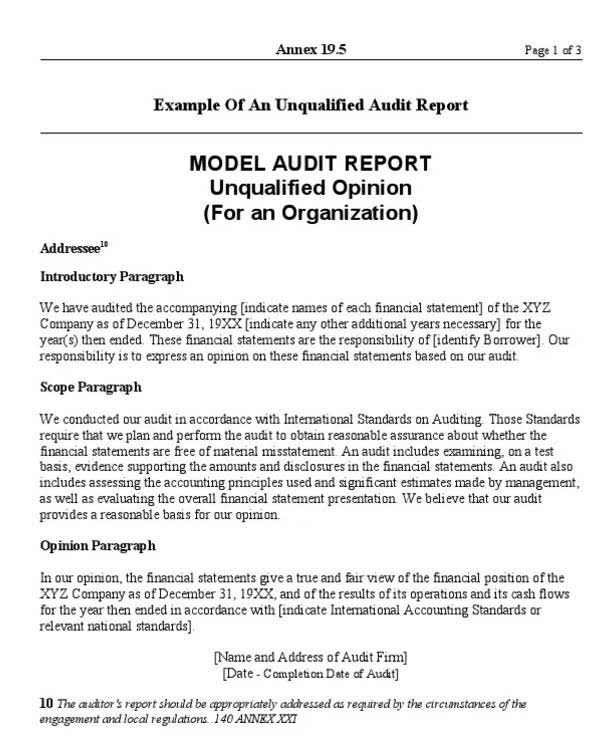Debt service coverage ratio is a financial ratio that represents the ratio of a company’s annual net operating income to its total debt obligations, including interest and principal payments. This calculation is used primarily by lenders when evaluating a company’s ability to pay its debts. Essentially, the ratio measures the number of dollars of cash flow available to cover every dollar of debt repayment.
- Once you’ve calculated EBIT, you‘ll need to add back any depreciation or amortization expenses.
- As stated above, a DSCR of 1.0 or higher is considered good, while a ratio below 1.0 indicates that a company may struggle to meet its debt obligations.
- It is important to note that a higher debt service coverage ratio indicates that a company is better able to meet its debt obligations.
- Let’s see how this revised debt service figure changes your debt coverage ratio.
- By mastering these essential Excel functions, you’ll be able to analyze your debt more effectively and make informed financial decisions.
- Other sectors (i.e. software/technology) are more reliant on equity funding, carry less debt, and have naturally high DSCR.
By examining interest rates, amortization schedules, and extra payments, you can determine the best approach to paying off your debt and achieving financial freedom. When it comes to understanding your company’s financial situation, it’s important to take a deep dive into the numbers. Calculating key debt ratios can give you valuable insight into your company’s financial health and help you make informed decisions about future investments. It is important to note that a low DSCR can have negative consequences for a company. If a company has a low DSCR, it may be seen as a risky investment by lenders, which can lead to higher interest rates or even loan denials.
Key Concepts in Debt Analysis
In the event of default, the lender most likely would have the right to seize the property based on the terms as outlined in the original agreement to recoup any monetary losses. From the perspective of commercial lenders, such as banks, debt service is one of the most critical factors to consider when underwriting a loan. Making extra payments can help you pay off debt faster and reduce the amount of interest you’ll pay over time. By creating an Excel model that evaluates the impact of different additional payment scenarios, you can decide whether paying extra makes sense for you. It’s important to note that some loans may have prepayment penalties, so be sure to check with your lender before making extra payments. It’s also important to know how to use basic arithmetic functions in Excel, such as addition, subtraction, multiplication, and division.
Understanding your company’s DSCR is crucial for ensuring that you have enough cash flow to meet your debt obligations. If your ratio is too low, it may be a sign that you need to focus on increasing your cash flow or paying down debt before taking on additional investments. A property with a 1.20 DCR has income before debt service that is 1.20 times as much as the debt service – in other words, the property generates 20% more net income than it needs to debt service coverage ratio formula in excel make its mortgage payments. This debt service coverage ratio template built in Excel will help you calculate the debt service coverage ratio, both including and excluding capex. A DSCR of 1.24 puts your small business in the range of a good debt service coverage ratio, making it more likely you’ll be approved for that small business loan. You might need to increase your debt service coverage ratio to boost your chances of getting a small business loan.
How to Calculate Debt Service Coverage Ratio: A Step-by-Step Guide
Of course, the “new” occupancy cost would be captured in the denominator as the principal and interest obligations for the commercial mortgage loan. In these cases, that’s cash that’s gone and can no longer be used to service debt. Some more conservative lenders will adjust EBITDA accordingly when calculating DSC for CAPEX-heavy industries. However, it often serves as a proxy for it because it’s easy to calculate, and both its definition and its purposes are generally agreed-upon across jurisdictions. Most commercial banks and equipment finance firms want to see a minimum of 1.25x but strongly prefer something closer to 2x or more. Many small and middle market commercial lenders will set minimum DSC covenants at not less than 1.25x.
Expect the unexpected: Risk assessment using Monte Carlo simulations – Journal of Accountancy
Expect the unexpected: Risk assessment using Monte Carlo simulations.
Posted: Wed, 01 Nov 2017 07:00:00 GMT [source]
Assuming the company was looking to take out a Commercial Mortgage to support the property acquisition, the mortgage lender would need to add back rent to the numerator to understand the going-forward cash flow. Consider a company that’s been renting its warehouse but recently exercised an option to purchase the building. This company’s historical income statements show “rent expense,” but that expense will no longer exist once it owns the building. While most analysts acknowledge the importance of assessing a borrower’s ability to meet future debt obligations, they don’t always understand some of the nuances of the DSCR formula.
How to Calculate Debt Service Coverage Ratio (DSCR) in Excel
It’s important to compare a company’s debt service coverage ratio to others in the same industry to get a more accurate picture of their financial health. The debt service coverage ratio (DSCR) measures the credit risk and debt capacity of a commercial property by comparing its income potential to its annual debt service requirements. Performing debt analysis in Excel is an essential skill for anyone looking to manage their finances effectively. By understanding key ratios and analyzing different repayment scenarios, you can make more informed decisions about borrowing, investing, and paying off debt. By following the step-by-step guide outlined in this article, you’ll be able to create an accurate and informative debt analysis that will serve you well for years to come. In conclusion, analyzing debt repayment scenarios can help you make informed decisions about managing your debt.
The debt coverage ratio is used to determine whether or not a company can turn enough of a profit to cover all of its debt. Typically banks and lenders use this formula to decide whether or not to award a company a business loan. Debt repayment can be a daunting task, but it’s important to take control of your finances and manage your debt effectively. Once you’ve calculated your key ratios, it’s time to analyze different debt repayment scenarios.
What is Debt Service?
One of the most common errors is failing to include all debt obligations, including any required balloon payments. Another mistake is failing to include all operating expenses, which can lead to overstating net operating income. To ensure accurate calculations, it’s important to include all relevant data and double-check all calculations.
Keep in mind, your annual debt service will change based on when your loan term begins. For example, if your business has a net operating income of $250,000 and a total debt service of $150,000, your DSCR would be 1.67. Find out why DSCR is important, see examples for how to calculate your debt service coverage ratio and discover what a good debt service coverage ratio is (and isn’t). There are actually three different kinds of debt service coverage ratios, or DSCR, that can be calculated in Microsoft Excel .


